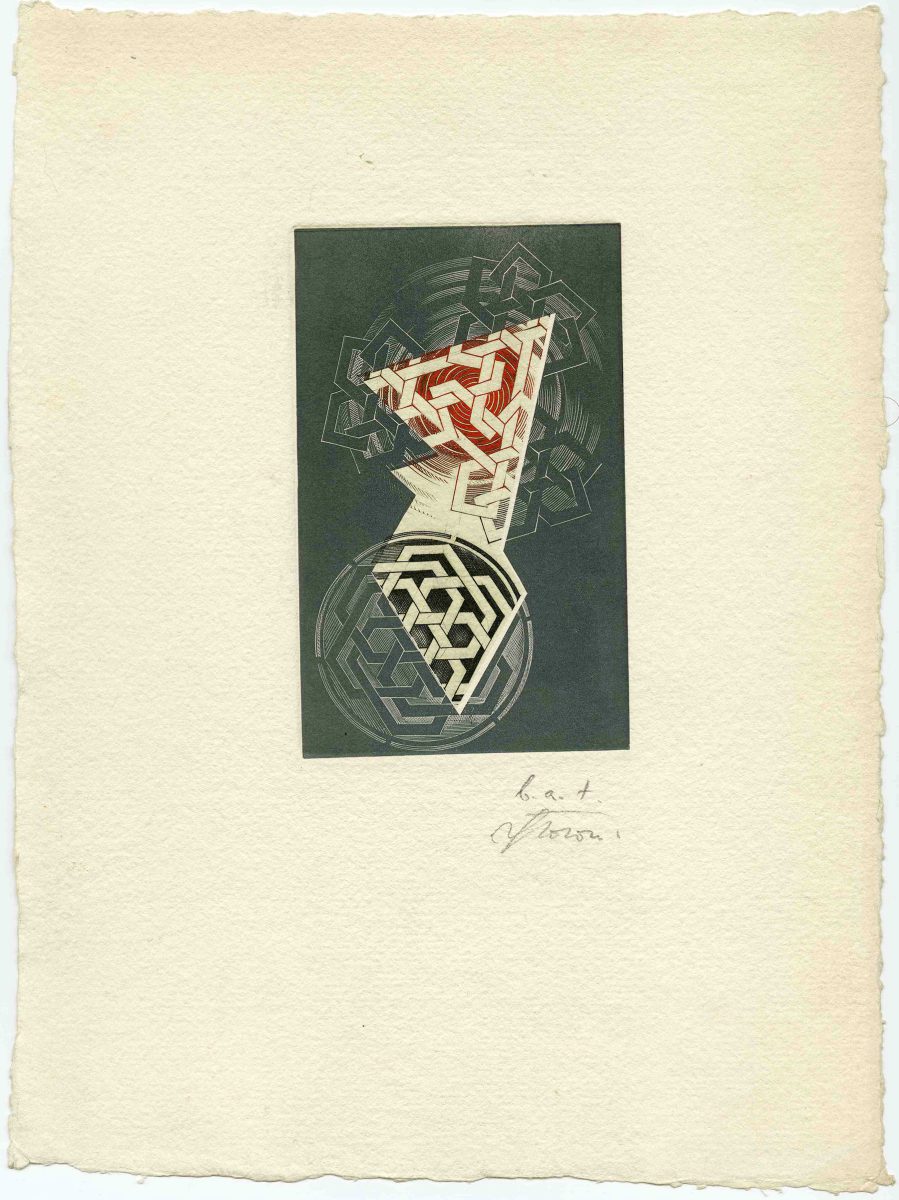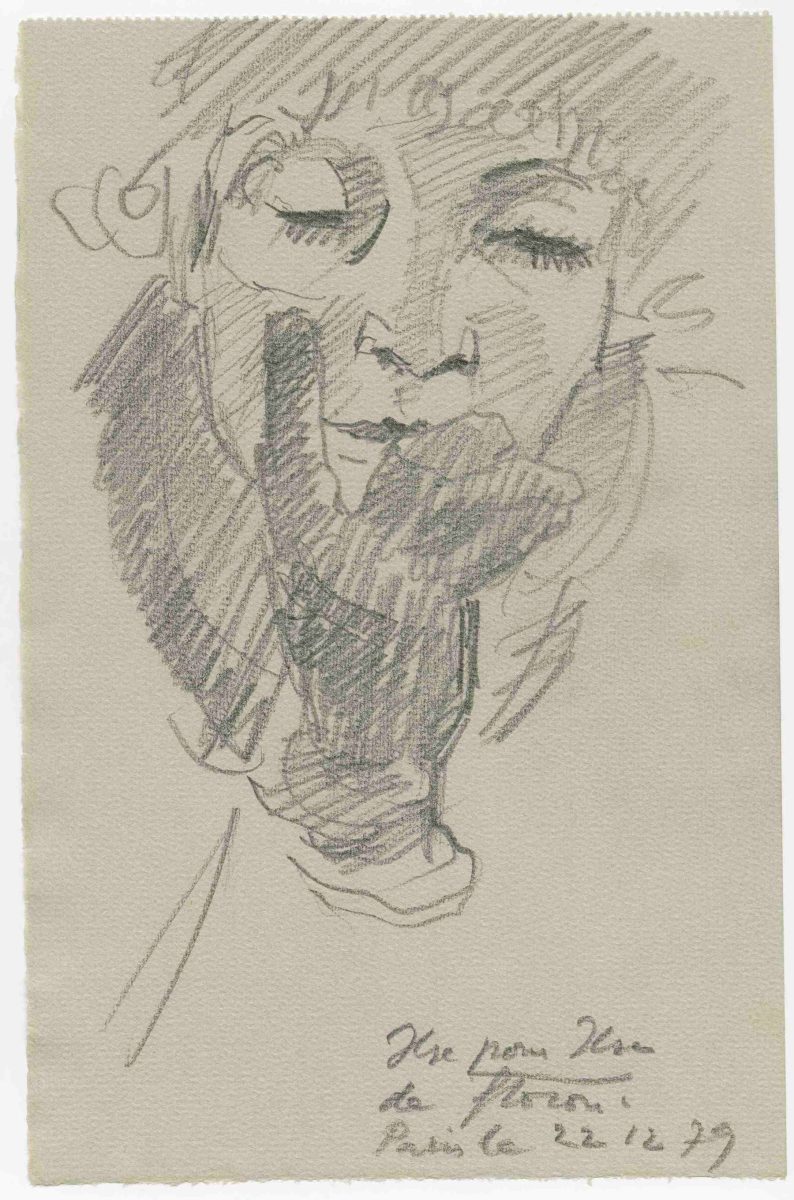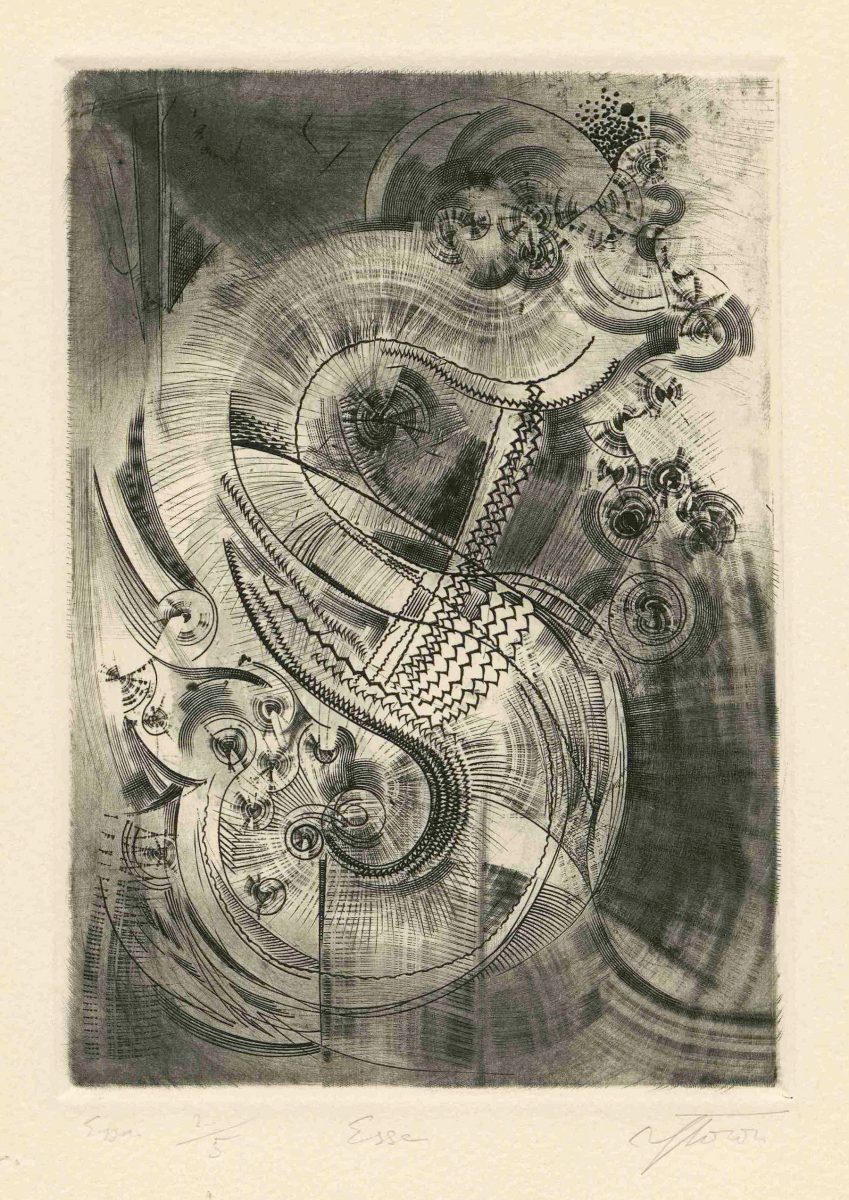Soon after Pietro Sarto founded the Atelier de Saint-Prex, Albert Flocon visited the small village on the shores of Lake Geneva to print some of his plates, notably his Entrelacs series (1973). His theories on perspective and his in-depth knowledge of engraving techniques sparked discussions around the presses and during meals at the community table. Flocon's portraits of Edmond Quinche and Ilse Lierhammer bear witness to this spirit of camaraderie, which Flocon would later evoke in a text published in Nouvelles de l'Estampe in 1979.
Born in 1909 in Köpenick, near Berlin, the German printmaker Albert Flocon, born Albert Menzel, studied from 1927 to 1931 at the Bauhaus in Dessau, which was then among the most influential schools promoting artistic modernism in the early 20th century. At the Bauhaus Flocon studied with Albers, Klee and Kandinsky, but he was particularly impressed by Oskar Schlemmer's theatre workshop, which was based on a radically new conception of the theatrical space. When Hitler came to power, Flocon emigrated to France, where he initially worked as a freelance graphic designer before joining an advertising agency run by Victor Vasarely. When the Second World War broke out, he joined the Foreign Legion but was soon demobilized. In 1944, Flocon's family was arrested by the Gestapo in Toulouse. While Flocon was taken prisoner, his wife and daughter were deported to Auschwitz and murdered. It was in this tragic context that Flocon began to think deeply about perspectival space and conceived the project for his first engravings. Returning to Paris after the war, he became a naturalised French citizen and adopted the name Flocon. His first suite of engravings, Perspectives (1948), was accompanied by poems by Éluard. It was during this period that Flocon met Albert-Edgar Yersin, a major figure in French-speaking Switzerland's printmaking scene. With Yersin and other printers he founded the Graphies group. Flocon's work as an engraver was closely linked to his theoretical reflections on the problems of vision and perspective, which fed into his teaching at the École Estienne (1954-1964) and at the École des Beaux-Arts in Paris, where he held the chair of perspective from 1964 to 1973. Praised by the philosopher Gaston Bachelard as the "project’s time-space engraver” Flocon occupied a special place in the world of modernist printmaking, distinguishing himself by his profound awareness of the theoretical and technical sources on which the artform is based. After publishing an important Traité du burin (1953), Flocon explicated the rules of “curvilinear” perspective. This technique of representation, which aims to incorporate the subject into the representation itself, was to have a particularly strong influence on the young Pietro Sarto, who was staying in Paris at the time.



